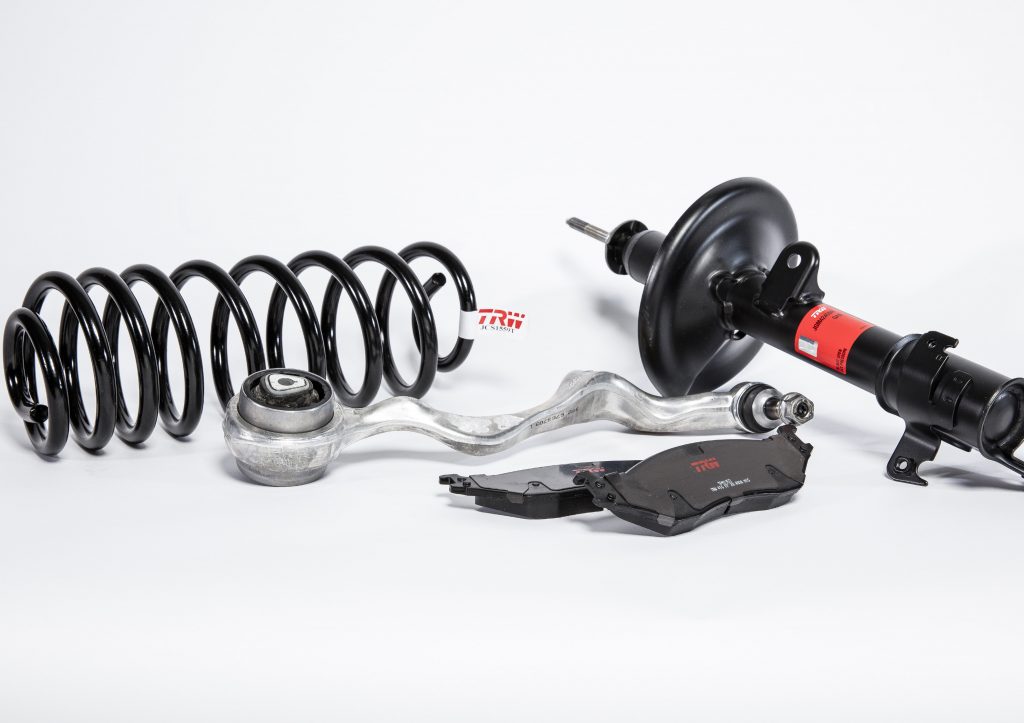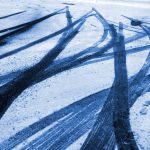With research showing it takes a massive ten times longer to stop a car on ice, ZF Aftermarket, owner of the TRW brand, is highlighting vehicle occupant safety by urging motorists and garages alike to insist on stringent winter vehicle safety checks.
The business wants to ensure that the components within safety critical systems such as the braking and steering systems are in full working order and contain no deficient or damaged parts in preparation for winter weather. Kevin Price, UK Marketing Manager, ZF Aftermarket, explains: “By the year 2050, the EU plans to reach almost ‘zero loss of life’ through traffic accidents. In line with this, ZF is consistently pursuing the goal of ‘Vision Zero’ – mobility with zero accidents and zero emissions.
The only way to achieve this is with all electric and autonomous mobility. Ultimately, human failure can only be ruled out when the computer is in control all the time, everywhere. Currently, humans cause roughly 90% of all traffic accidents and are therefore primarily responsible for approximately 1.25 million traffic deaths annually around the world.
Safety systems essential in bad weather
Systems such as Electronic Stability Control (ESC) can be invaluable during bad weather. These systems combine anti-lock brakes (ABS) and traction control with a lateral stability control function and are specifically designed to help control and maintain the lateral stability of the vehicle. If a potential loss of vehicle control is sensed, ESC automatically applies brake pressure to the appropriate wheel(s) and, if necessary, cuts engine throttle to help bring the vehicle back in line with the driver’s intended path.
When the ESC system detects a potential skid, it is activated to keep the vehicle on its intended trajectory road, reacting in milliseconds to apply individual brakes in a way that enhances the driver’s control. It is at this time that the low viscosity of this fluid is required. It is critical to have the right fluid in the system at this time.
“Even ESC and ABS have limitations when it comes to aquaplaning,” Kevin explains. “This occurs when water collects in grooves and ruts on the road and a vehicle is travelling fast. If the water can’t pass through the tread grooves on the tyre, a wedge of water forms underneath, making steering and braking extremely difficult. Incorrect tyre pressure and worn shock absorbers can contribute to this effect.”
Innovation in coil spring design
Central to the suspension system and complementary to the shock absorbers are the humble coil springs. The business is urging garages to encourage motorists to fit OE quality coil springs utilising mini block and tapered wire technology as a safety measure before the winter weather sets in.
Extra strain is put on this vital component during the winter as salt and grit used on the roads during bad weather causes the spring to corrode at a faster rate. “Coil springs are an undervalued, less talked about yet vital part of a vehicle’s suspension system,” says Kevin. “Coil springs store energy. Indeed, they are THE part of the suspension system that supports the weight of the vehicle. “The environment in which a coil spring operates is, by its very nature, harsh. These conditions result in damage to the surface coating and the steel suffers microscopic damage.
In winter, water, road salt and grit mix together to form a perfect grinding paste between coil spring and spring seat, causing the spring to break. Breakage is always at the end of the coil, usually at the lower end where road debris accumulates. By incorporating OE design and technology, such as mini block and tapered wire into aftermarket components, in its TRW branded product, ZF Aftermarket offers the aftermarket the strongest, most durable coil springs on the market.”

Coil springs have to be incredibly strong and durable. Coil spring rate (strength) is defined by wire diameter, the number of coils, the coil spring body diameter and material specification. The drive by VMs to reduce component weight has given birth to high stress coil springs with relatively few coils.
So, the need to incorporate other technologies and design traits into the coil spring to increase strength without adding weight is now fundamental. “Fitting a replacement spring which has different characteristics to the OE specification can not only destroy the ride and handling characteristics of a vehicle, but it can also negatively affect braking performance,” Kevin says.
The mini block spring becomes progressively stronger the more it is compressed and the tapered wire profile is asymmetric. This means that the inside diameter of the last coils are not the same, with the smaller diameter fitting ‘up’ against the vehicle chassis. At each end the spring is supported by a rubber pad, the lower of which incorporates the bump stop. Coil springs NOT using the tapered wire design are the same diameter throughout. By not following the OE design, the ends of these aftermarket springs do not fit snuggly into the rubber pads.
The primary function of the rubber pads, which are a close interference fit on the spring ends, is to isolate the vehicle cabin from road noise by preventing metal-to-metal contact between the spring ends and the upper wishbone and chassis. The design of the upper wishbone is such that debris thrown up by the road wheels can lodge between the lower coils and the rubber pad over a period of time and scrape off the surface coating of the spring. Once bare metal has been exposed, corrosion soon takes hold, especially on salt-laden roads, and eventually the spring will break.










